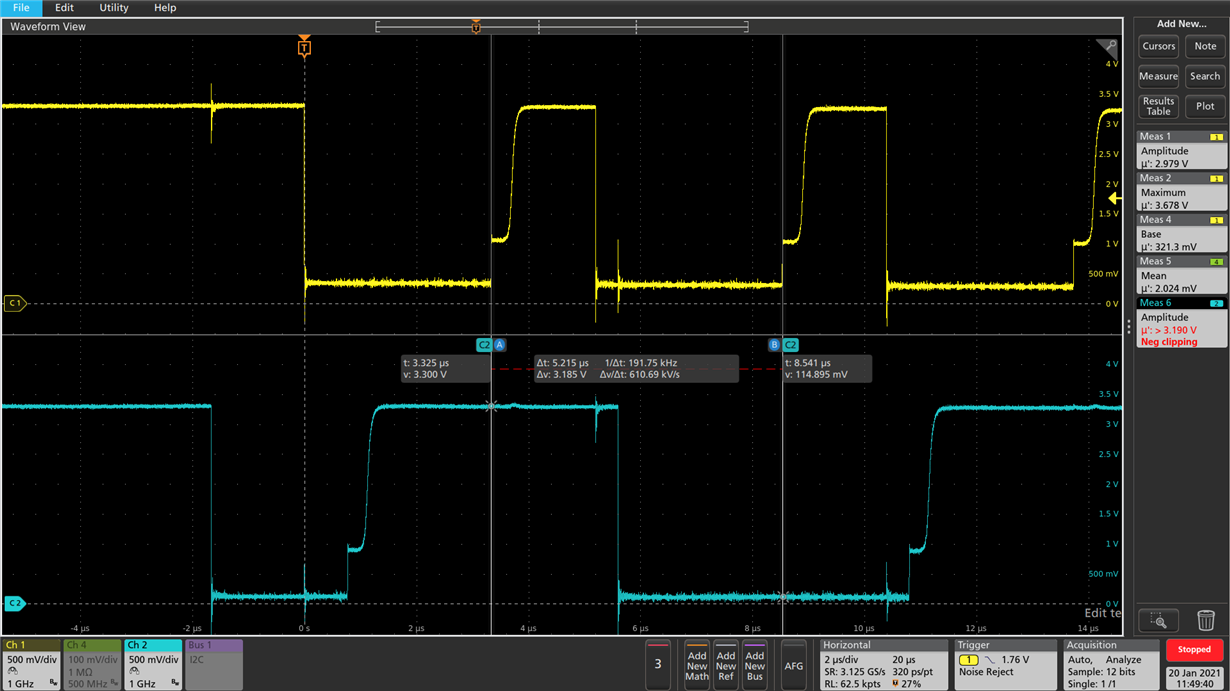Other Parts Discussed in Thread: TCA9617B,
Hi Team,
We have a customer using P82B96DG4 in their application. She noticed some noise and slow rise of SCL and SDA signals as shown in the waveform below. The SCL and SDA pins are connected to PB6 and PB7 of STM32F207 and no other devices are connected to these pins. Please refer to the schematic diagram below for reference. What could be the cause of this signal?
Regards,
Danilo


